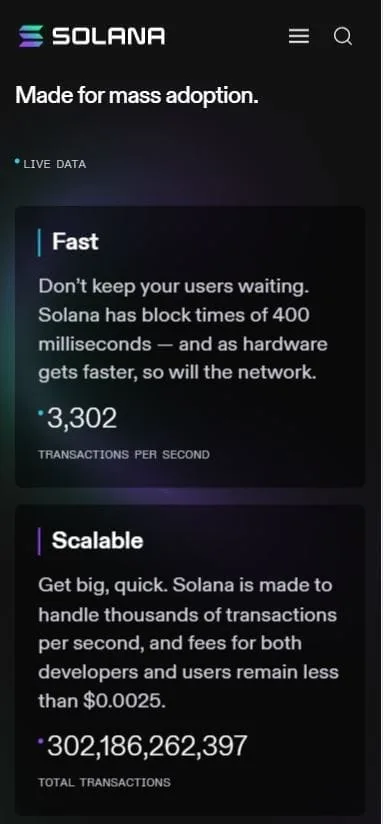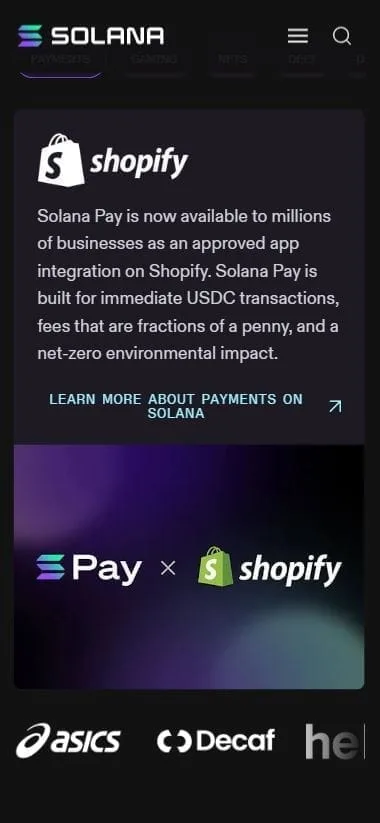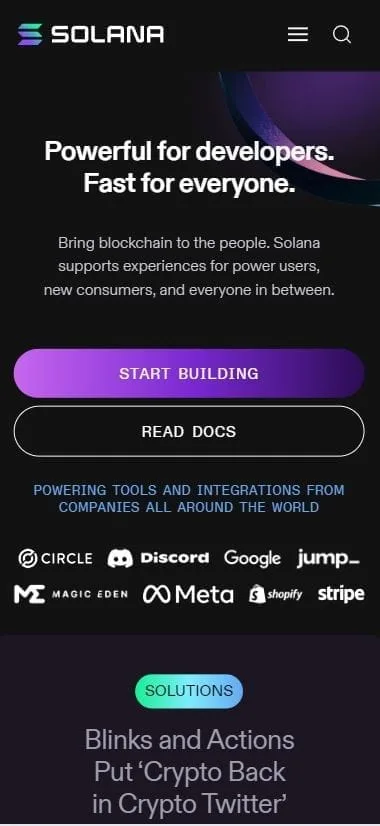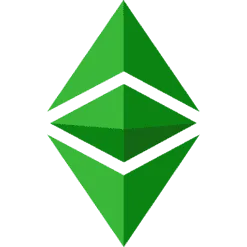What Is Solana (SOL)?
Solana is a blockchain network that shares many characteristics with Ethereum, and it’s often referred to as an “Ethereum killer.” Like Ethereum, Solana’s native token, SOL, is traded on major exchanges and plays a key role in facilitating transactions within the Solana network, which has several unique features. One of the main innovations of Solana is its use of the Proof-of-History (PoH) consensus mechanism. This system uses cryptographic timestamps to establish the order of events and define the next block in the blockchain, creating a more efficient way to process transactions.

In contrast to older cryptocurrencies like Bitcoin and Litecoin, which use Proof-of-Work (PoW), Solana’s Proof-of-History mechanism offers advantages in terms of speed and scalability. PoW relies on miners to solve complex computational problems to validate blocks, consuming significant energy in the process. This energy-intensive model has been a driving force behind Ethereum’s switch from Proof-of-Work to Proof-of-Stake (PoS), which significantly reduces energy consumption by 99.9%.
Proof-of-Stake (PoS), used by Ethereum and now Solana, relies on token staking as collateral to validate the next block. Validators reach consensus by staking their tokens, ensuring that the network remains secure and decentralized while using far less energy than Proof-of-Work systems.
Solana’s Delegated Proof of Stake
According to Konstantin Anissimov, the COO of CEX.IO, Solana combines proven cryptographic strategies with innovative solutions to tackle the limitations of earlier blockchain networks, particularly Ethereum. Solana’s unique blend of Proof-of-History (PoH) and Delegated Proof-of-Stake (DPoS) mechanisms aims to solve Ethereum’s scalability challenges.
To recap, the Proof-of-Stake (PoS) system involves validators who confirm transactions and create new blocks based on their staked tokens. Solana’s Delegated Proof-of-Stake adds an extra layer of efficiency and scalability by allowing a smaller group of validators to produce blocks, streamlining the consensus process.

Christian Hazim, an analyst at Global X, points out that Solana’s Proof-of-History provides a distinct level of security to the network. This combination of PoS and PoH allows Solana to address two critical aspects of the blockchain trilemma, as proposed by Ethereum co-founder Vitalik Buterin: scalability and security. While Ethereum is primarily focused on decentralization and security, Solana enhances scalability through its fast transaction processing, alongside strong security guaranteed by the Proof-of-History mechanism.
What Makes Solana Unique?
Solana leverages a unique combination of Proof of History (PoH) and Delegated Proof of Stake (DPoS) to offer significantly faster transaction speeds compared to its rivals, such as Ethereum and Cardano (ADA), all while maintaining lower costs, as explained by Konstantin Anissimov.
In contrast to traditional consensus mechanisms like Proof of Work (PoW) and Proof of Stake (PoS), which either rely on miners or staked tokens to define the next block, Solana uses timestamps to structure its blocks. This innovative approach means that validators on the Solana blockchain vote on the timestamps of the blocks, allowing them to validate transactions more efficiently.
By utilizing timestamps, Solana achieves a higher level of speed and security in its computations, while still maintaining decentralization. This results in a more scalable network that can handle a higher volume of transactions at lower costs than many other blockchain platforms.
How Does Solana (SOL) Work?
Solana operates on a hybrid model combining Proof of History (PoH) with Delegated Proof of Stake (DPoS), a strategy designed to enable fast transaction processing. According to Bryan Routledge, associate professor of finance at Carnegie Mellon University, this combination is aimed at solving the challenge of processing a large number of transactions quickly, a feat traditionally associated with centralized systems. For instance, large-scale centralized companies like Visa can manage high-speed transactions because they leverage a vast network of computers, whereas Bitcoin, by contrast, sacrifices speed for the sake of decentralization.
Solana’s unique approach attempts to strike a balance, offering transaction speeds on par with centralized systems like Visa while retaining the decentralized nature that is central to blockchain technology. This enables Solana to scale more efficiently and at a lower cost, both in terms of environmental impact and monetary expenditure. However, the increased speed of transaction processing requires enhanced security measures, which is where Solana’s Proof of History algorithm comes into play. This algorithm adds timestamps to each block in the chain, ensuring both the speed and security of transactions.
Solana’s native token, SOL, is used as collateral for staking, facilitating the processing of transactions across the network. These transactions include a wide range of activities, from validating smart contracts to powering non-fungible token (NFT) markets. One notable moment for Solana came in August 2021, when the Degenerate Ape Academy launched as the first significant NFT project on Solana’s marketplace. This event triggered a surge in Solana’s price, which increased from around $30 to $75 in just three weeks. The platform reached its all-time high in November 2021, peaking near $260 during the height of the crypto bull run.
























Harran –
Good
AssssMan –
The price of Solana went up after Trump’s incident